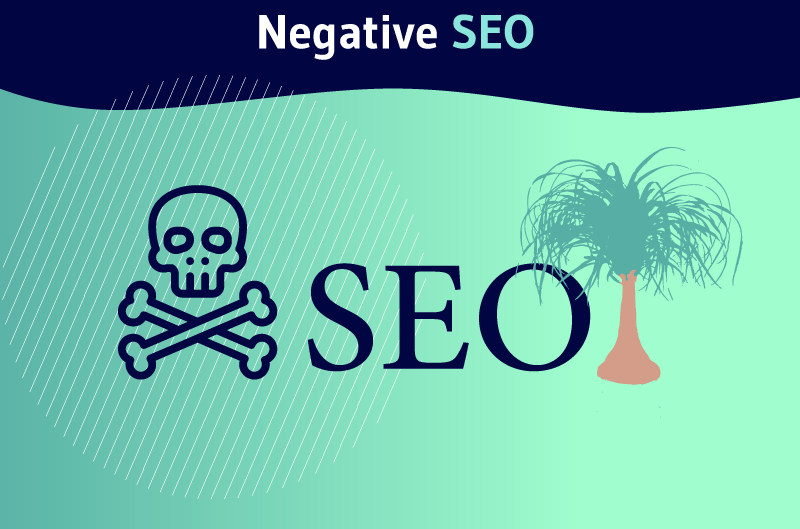Negative SEO is a set of malicious practices generally used to sabotage the ranking of a competitor’s site on the pages of search engines. In some cases, a site can be a victim of Negative SEO directly by its owner, either by inexperience, or deliberately to demote a page he is not proud of in terms of e-reputation. This is known as dereferencing in this case.
Contrary to SEO which advocates ethical practices, negative SEO is classified as ” Black Hat SEO “because of its malicious nature. It could be described as the opposite of the “normal” SEO we all know.
Whether you’ve heard of it or not, it’s a controversial topic in the SEO world
So:
- Is the threat of Negative SEO real?
- Where did the concept come from?
- What are the usual practices used in negative SEO?
- How to know if you are a victim of a Negative SEO attack?
- What are the steps to take to heal and preserve?
- What does Google think about all this?
Find out absolutely everything in this mini-guide entirely dedicated to negative SEO
Chapter 1: Negative SEO – Definition and origin
It is appropriate that we begin this guide with a thorough definition of the term
1.1. Definition
As previously explained, Negative SEO or NSEO is a malicious attack aimed against a website in order to ruin its ranking in search engines

It can be a competitor jealous of your success who seeks by all means to make you lose your current ranking in the hope of quickly surpassing you
Or it could be a hacker who is experimenting with forbidden techniques on your site out of revenge or for fun.

This practice is not so different from Google bowling.
However, not all cases can be called an attack or competition. It is quite possible that a site owner decides to apply a Negative SEO technique on his site
The common reason for such a choice is that there is a page that ranks well on search engines, but literally tarnishes the reputation of the brand. The author can then decide to force Google to “kill” this page
1.2. where did the concept of Negative SEO come from?
Initially, Google did not have a solid system to evaluate the authority of web pages. At the time, the spammy links that each site received were not completely ignored
Some SEOs took advantage of this lightness of the Google system to multiply the creation and purchase of backlinks by thousands, even millions
In this mass, regardless of the quality of the proposed content, some have seen their ranking improve, others not, but no one ended up with a penalty or a downgrading of his position
But all this did not last long because, in April 2012 Google updated its algorithm Penguin

The purpose of this update was to establish for the first time severe punitive measures to discourage people who resorted to excessive creation of backlinks with the intention of manipulating Google’s algorithms
Indeed, it was no longer safe, after the Google Penguin update, to buy low-quality links and hope to improve its ranking
On the contrary, the sites involved risk to be downgraded, even to be permanently removed from the index of the search engine
It is then that some less scrupulous people thought that if these practices could ruin the referencing of a website, why not intentionally direct them to competing sites to force Google to sanction them
This is where the concept of Negative SEO came from
1.3. Is the threat of Negative SEO real and does the practice continue to be used today?
There is no doubt that the threat of negative SEO is real. Many sites have experienced it and others are still dealing with it
In fact, by browsing through Black Hatforums, one can come across testimonies of people who confide in having succeeded in killing websites thanks to Negative SEO.
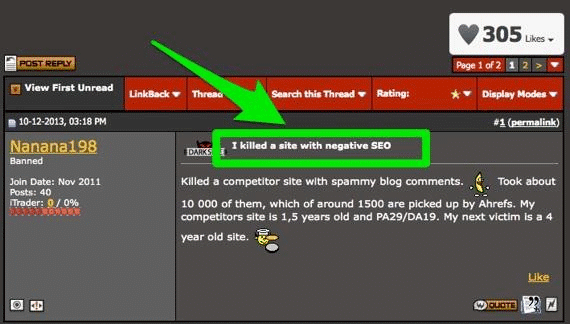
Source Neil Patel
My site also experienced an episode of NSEO and here is my article about my experience.
This is something to worry about when you own a web site. But fortunately, the majority of sites are now safe from NSEO attacks. The fact is that since the first Penguin update, Google has improved considerably
The search engine is becoming more and more efficient at spotting abnormal explosions of spammy backlinks on a site. As a result, even if a competitor tries to undermine your ranking with these types of attacks, they will be almost harmless
So, if you notice for example a sudden drop in your Google ranking, don’t be too quick to suspect an NSEO attack. Make sure you first check a series of common reasons that could be the cause.
Such as
- A manual penalty ;
- Broken backlinks;
- A update of the Google algorithm ;
- Behavioral changes on the part of your users;
- SEM traffic cannibalization;
- Competitors simply outranking you;
- Changes to your site;
- Etc

Of course, there is no denying that there are sophisticated Negative SEO strategies that can affect your SEO. But it must be said that these attack strategies are quite expensive to implement and extend over a long period.
And in the end, they do not always give the expected results. It is not obvious that a competitor invests so much money and time for an attack that he does not have a 100% guarantee
Unless you have an online casino or a lending agency, I don’t think a competitor will go that far
What you need to be most careful about is your own strategies that you adopt on the site. Indeed, you can damage your site yourself without necessarily realizing it
For example, let’s say you made the mistake of hiring an inexperienced SEO specialist. He can create a lot of backlinks directed to your site. Or he may spam your comment area or invest in buying fake reviews
You can also for example hire a disloyal writer who unscrupulously plagiarizes content from other sites to build your content. The fact is that these “types of NSEO attacks” attacks” can hurt your SEO even more than an attack from a competitor
Technically, there is no difference between NSEO attacks coming from inside or outside the site. They all harm the site’s SEO. But what does Google think about all this?
Chapter 2: What does Google think about Negative SEO?
In a discussion between webmasters on Hangoutjohn Mueller answered a participant who wanted to know what he should do in case of a NSEO attack. The participant was a web publisher and here is his question
“My website has hundreds of links that appear to be spam. I suspect that perhaps one of my competitors is trying to lower my ranking. Should I continue to disavow these links week after week? Or should I only worry if I get manual action from unnatural links?”
John Mueller’s answer to this question confirms what we already know, Google’s algorithm ignores spammy links:
“In general, we automatically take them into account and try to…automatically ignore them when we see them happening. For the most part, I think that works pretty well. I see very few people who have real problems with it. So I think it works well.”
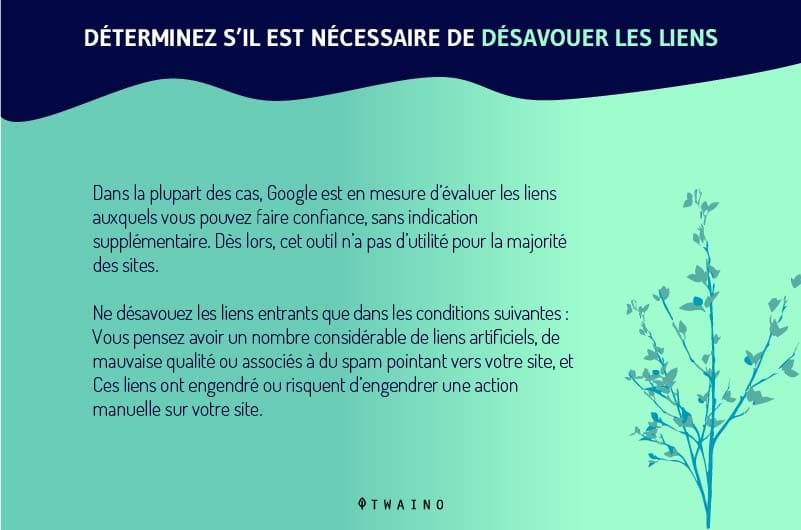
John Mueller reassures the participant that these links could just be normal spammy links. He noted that normal spammy links have been around for a long time and that they can happen naturally at any time
And that if spammers think they can simply redirect low-quality links to an authority site to hurt its SEO, it won’t work
John Mueller also spoke out on the issue of disavowing these links
He recommends using thegoogle’s disavow tool s disavow tool in case the site owner is really worried about spammy links on his site
“If you’re worried about them, whether it’s something you’re not sure about, you’re losing sleep over these links and you just want to make sure that Google is handling them properly, then using the disavow tool would be perfectly fine. The disavow tool is not an admission of guilt or anything like that. You’re just telling our systems that these links should not be considered for your website. And there are a number of reasons why you might want the links to be ignored. It’s not something that our algorithms are trying to judge for your website.”
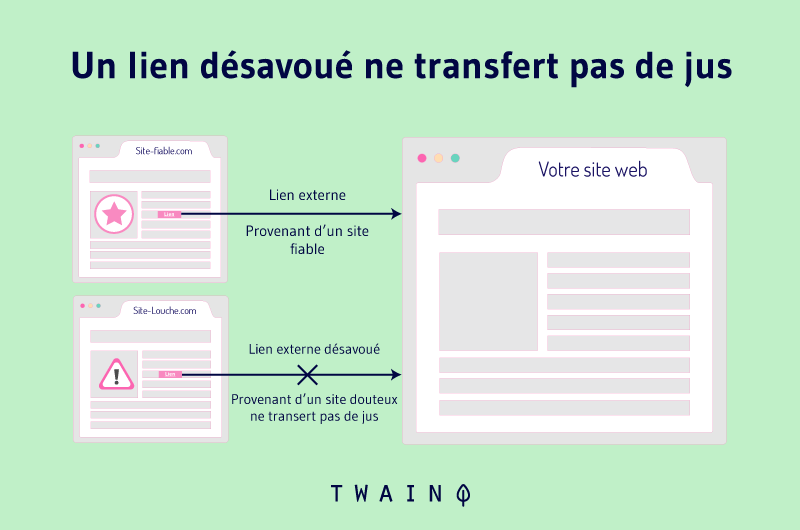
Be careful not to misinterpret John Mueller’s last sentence and take it out of context:” .. This is not something our algorithms are trying to judge for your website. ”
Through this passage, John Mueller is just trying to point out the ability Google has to automatically identify spam links
Then he continues
“So, if you see spam links from certain sites using the domain directive, it’s easy to manage them in the disavow file and you can just submit them there.”
Then he brings back how to handle normal spammy links
“On the other hand, if you think these links are more like normal spam and any algorithm could figure it out, you can just leave them alone and move on.”
Through this passage, we can clearly see that John Mueller wants to be less alarmist and asks to quietly leave the spam links that you consider normal. They are without risk for your site since Google will not take them into account
He concludes by adding that the google’s disavowal tool that he recommended should be used only in extreme cases. It should not be used at the slightest trace of spammy links
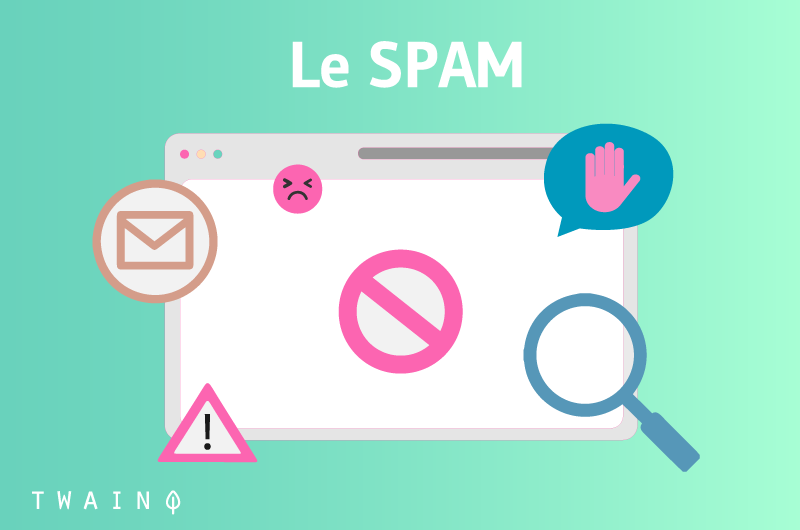
It is a tool that should be used as a last resort, for the most critical cases
To report this, here is what he said
“I think for most websites, pretty much the vast majority of websites, you don’t need to use the disavow tool. That’s why we have the disavow tool so separate from the search console so that you’re not tempted to use the disavow tool, because it looks like this normal part of the search console that everyone should be using. It’s really something that you only really need to use in really extreme cases.”
So in plain English, if we were to summarize Google’s opinion on the issue of Negative SEO, it would simply say that Google ignores anything that is an unwanted link on your site outside of normal cases
If your site shows excellent signs of quality, that is, if you manage to produce quality content that users love, Google may well give you the ranking you deserve without necessarily taking into account spammy links
Indeed, ignoring the qualities of a website and basing itself on spammy links to downgrade it would be a bit harsh
What would be the point of Google wanting to sanction a site by sweeping away all the positive signals it has hard won?
Not only would users lose a reliable source for their query, but Google would also become less able to provide relevant pages for its users.
And this is where we see the whole point of Google’s emphasis on ignoring spam links
Chapter 3: 4 types of Negative SEO attacks and how to solve them
In negative SEO, there are several techniques that can be used
Here is a list of 4 types of Negative SEO attacks that are frequently encountered
3.1. Link farm and spammy backlinks
The link farmis a common form of Black Hat SEO used to create a pile of low quality links and redirect them to a website
It is a form of NSEO showing how to use Google’s guidelines to intentionally harm a website
To attack a website with the link farmer technique, spammers will first create a network of low quality websites
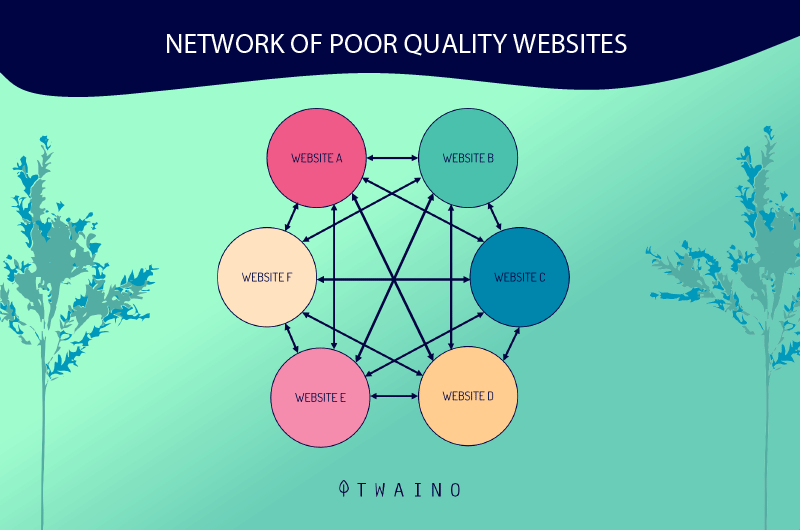
Then, they will produce identical content with the same anchor text to post on each of the sites, with the victim site’s domain name as the backlink
Within a few days or weeks, the site in question will be flooded with a ton of unwanted links
The idea is to make Google think that the site is running a link building campaign and that it is handling it very badly. The spammers will make sure that the links sent are unnatural and of low quality so that Google will sanction the attacked site and downgrade it on its SERPs
As a case in point, we have Jacob King who was attacked by the same technique on his website. At one point, Jacob noticed thousands of links with the mention of “porn movie” as well as other keyword variants all pointing to pornographic content
The main keyword used by the spammers was “porn movie” and had gained 20% of the site’s entire link profile in just ten days after Jacob noticed the attack
As a result, his podcast “WP Bacon” was downgraded more than 50 spots back on the majority of the keywords he targeted. The site’s traffic dropped significantly and his “WP Bacon” program lost a good chunk of its listeners
As you can see, Negative SEO is very real and can ruin years of SEO efforts in just a few days
What solution to use – Do a disavowal of spammy links:
Google offers a procedure that can be initiated to disavow these unwanted links.
It will essentially involve sending the search engine via the Search Consolea file called “disavow” containing all the referring domains that have attacked the victim site
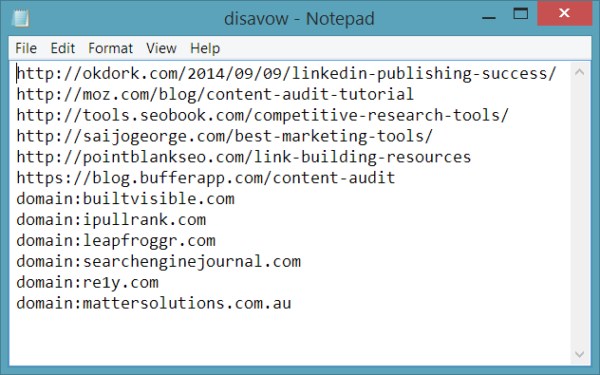
Source Url Profiler
Find the entire procedure of disavow unwanted links to a site by consulting this page proposed by Google itself.
This disavowal request allows you to tell Google to ignore all the links listed in the file so that they do not impact the ranking of the site under attack.
Even if Google responds to the request and effectively ignores these undesirable links, the site should not rest on its laurels, since this is not a one-time solution and final
It will be necessary to stay on the lookout and constantly disavow these spammy links as soon as they are detected
3.2. Content scraping
The first technique presented above is inspired by Google’s guidelines put in place to fight against poor quality backlinks. The technique was a way to force the search engine to penalize a targeted site by its penguin algorithm
With this second technique of Negative SEO, the concept remains essentially the same with the major difference that here it is the Google Panda algorithm that is called upon to penalize the attacked site.
The technique consists in scrape the contents of a targeted site to republish them entirely on other sites

Although the search engine is able to distinguish original content from copies, it is quite possible that the site that owns the content will be penalized for duplicate content
You may not know it, but Google also penalizes all sites that duplicate the same content. This is a way to discourage sites that do not produce original content and simply plagiarize other sites to animate their blog
Spammers are also aware of this and use this scraping technique for two reasons:
- To steal content from an authority site in order to improve the content of another site of poor quality
- To appropriate the content of a site before Google’s indexing robots explore it. The site that owns the content could be penalized for duplicate content
We can say that the first reason is less malicious, even if it is a dishonest technique. The second reason, on the other hand, is purely an attack aimed at sabotaging the SEO of scrap content
Indeed, if the content is stolen several times, its referencing on Google will surely take a hit. In order to remain effective in their maneuvers, spammers will not be satisfied with a single site on which the stolen content will be posted.
It is a network of websites that is used to form link farms and confuse the search engines. Google will then be forced to sanction duplicate content

It must be said that writing quality content and optimizing it for SEO can take hours or even days of work. Finishing all this to be stolen by a third site can be really discouraging
All the work done is discredited in a short period of time and on top of that, the author is punished by his own content
What solution to use – Send a copyright infringement report to Google:
In such a situation, the first decision to make is to contact the webmaster who appropriated the content
The possibility that the site administrator does not realize that the content is scrapped from another site cannot be ruled out, especially if he outsources content creation or works with guest editors
Explaining the situation to him could save his site from Google’s sanctions in the future, as he will probably replace the team of his staff who indulge in such stolen content practice
If, on the other hand, the site administrator refuses to cooperate and tries to usurp the ownership of the content, this is proof that it is a malicious attack. It is then that the procedure for reporting copyright infringement can be initiated
Google provides webmasters with a copyright infringement form to report such situations
By filling in this form, the victim claims the stolen content and asks Google not to consider the duplicates to penalize his site and harm his referencing
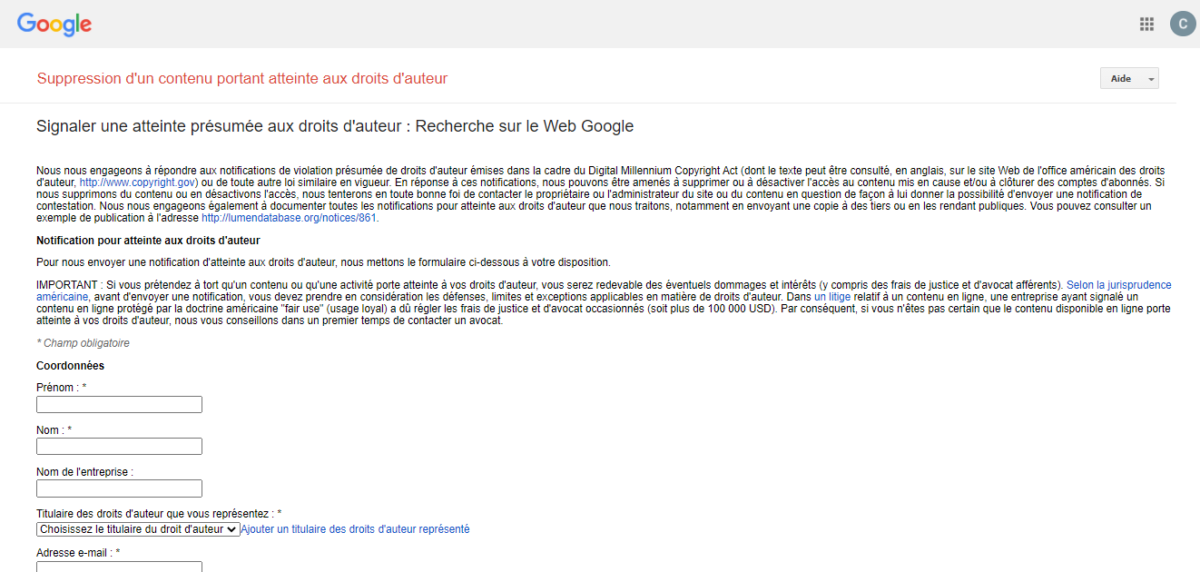
3.3. Hacking websites and attacks with malicious programs
When we talk about hackers attacking a website, many people think of masked criminals who penetrate the site’s system to make it inaccessible
While this is something that happens in real life, there are many other more ingenious hacking methods used in Negative SEO
These methods are more discreet and can eat away at a site’s SEO without the owner realizing anything.
This can include attacking less visited pages on the site, such as an old blog post, or directly making subtle changes to the page to damage the site in general
Here are some of these methods that can be used
- Adding poor quality content to the site;
- Replacing content on the site with duplicate content from other sources;
- Adding or replacing links on the site that redirect to pages from unreliable domains or pages specifically designed to harm the attacked site
- Removing links and images from the site’s pages;
- Injecting code into the HTML content of pages
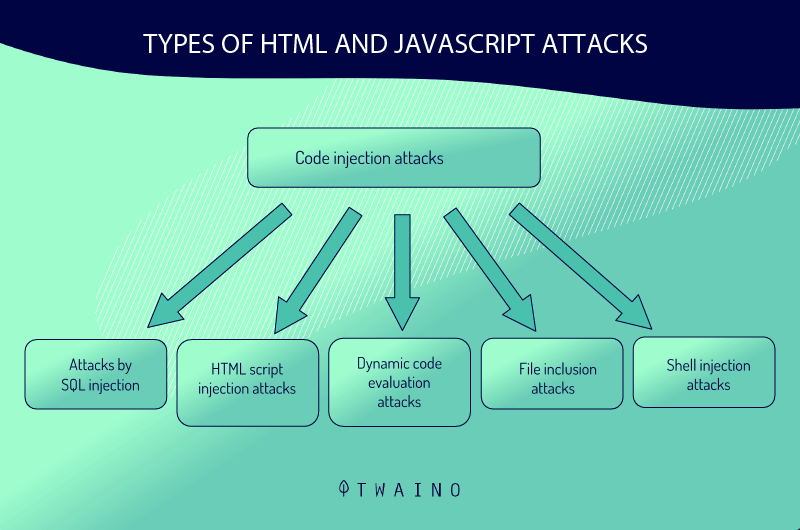
Sites that have been created for several years and that regularly produce quality content are the most exposed to these types of attacks
The fact is that the more content there is on a site, the more difficult it becomes to monitor, especially if the owner rarely accesses it
Hackers can attack pages that get a low traffic rate to ruin the whole site
What solution to use – Conduct frequent SEO audits and set up permanent administrative monitoring:
When a site is audited regularly, tracking its pages is more accessible. This also makes it easier to track the entire site
During an sEO auditaudit, technical problems that undermine the performance of the site are detected. Depending on the problems found, the SEO specialist in charge of the audit will be able to decide on strategies to correct these problems and help the site improve its performance
In addition, the SEO audit also provides an overview of the results of the strategies adopted to better evaluate them and make adjustments if necessary
The owner of the site, as well as the SEO specialist will be able to follow in real time the evolution of the traffic curve and notice immediately a sudden drop

You don’t need to be a computer expert to notice this type of NSEO attack. Here are a few signs that can alert you
- A sudden spike in traffic on certain pages of the site that were rather stable for years;
- A sudden flow of external links redirected to pages that until then were almost inactive or sudden interest from unusual sites that start sending backlinks
- Improved ranking for keywords not (or less) relevant to the site
It should be remembered that in some cases, these attacks that were thought to be carried out by competitors are in fact orchestrated by disgruntled employees or contractors
Not all spammers who attack a site are necessarily competitors, but can also be disgruntled ex-employees trying to get rehired
It is therefore important to revoke access to the website from any recently terminated employee or collaborator. They can still use their access to hurt the company in hopes of returning or simply out of bad faith
3.4. Fake reviews on the web
Negative SEO techniques are not only limited to manipulations aimed directly at the targeted site. People can also use other pages on the web to damage a site
There are testimonials from several business owners who have noticed an influx of bad reviews from Yelp, Google, YellowPages and other platforms
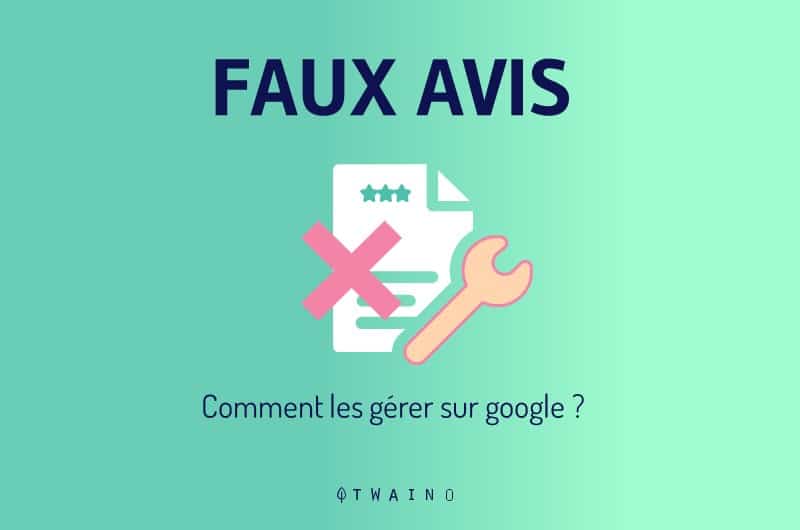
While most of these fake reviews posted on third-party sites are generally used to tarnish a brand’s reputation, those mentioned on the google listing of the company can directly affect its local referencing
Moreover, these unpleasant comments also have an impact on the company’s sales figures. We agree that reading bad reviews on a product could discourage some consumers, even leading them to cancel their purchase

This decreases the company’s sales as it loses stars in the consumer reviews
This drop in sales combined with a drop in traffic can sink a business very quickly
In such circumstances, the first thing to do to test the hypothesis of a possible NSEO attack is to check the company’s consumer reviews
Unless a company is involved in a public scandal, it is very unlikely that it will see a sudden increase in negative reviews
But the fact is that a company cannot expect to get only glowing reviews. So how do you recognize a fake review?
Here are some clues that can help
- These reviews usually get one star and include some hateful words
- The reviews are usually seen in abundance and over a long period of time with only a few hours (or days) between them;
- Etc
It can also be noted that most reviews from real consumers are often relevant and prove that the customer actually used the product
Consumers also use brand review sites to rate the company and encourage others to consume the product or not
So a company should also take into account the reviews filed on these review sites, which are often a mix of good and bad reviews. So it should expect to see both good and bad reviews.

Source Beauty Test
But a series of negative reviews can probably be a sign of an NSEO attack
What solution is used – Report fake reviews:
The majority of review sites offer the option for business owners to report fake reviews
While it is recommended to respond honestly and politely to bad reviews from real consumers, a business should not be courteous to fake reviews
Reporting these fake reviews is still the best way to help Google as well as review sites identify spammers and discourage their schemes so they don’t victimize others on the web
Even if you have the solutions to deal with these types of Negative SEO attacks, it is always better to prevent these problems rather than deal with them
Chapter 4: How to prevent Negative SEO attacks?
As the saying goes, prevention is better than cure. Indeed, it would be better to spot these attacks before they spread and cause serious damage to the site
Without effective monitoring of your site, imagine how long it will take before you realize that you have been attacked. It can take several weeks for you to realize that you have been attacked, first by the drop in traffic, before confirming whether it is an attack of any kind
During this time, spammers will take advantage of your silence to keep their negative campaigns going and add to the damage
You must therefore remain proactive and constantly monitor these types of attacks. To do so, here are a series of preventive measures to observe
4.1. Set up email alerts offered by Google Webmaster Tools
By setting up Google’s email alerts, the search engine can send you notifications as soon as
- Your site is attacked by malware
- Pages of your site are not indexed
- You have problems connecting to the server
- You receive a manual penalty from Google
If you have not yet set up e-mail alerts, find out how to do so on this page provided by the search engine
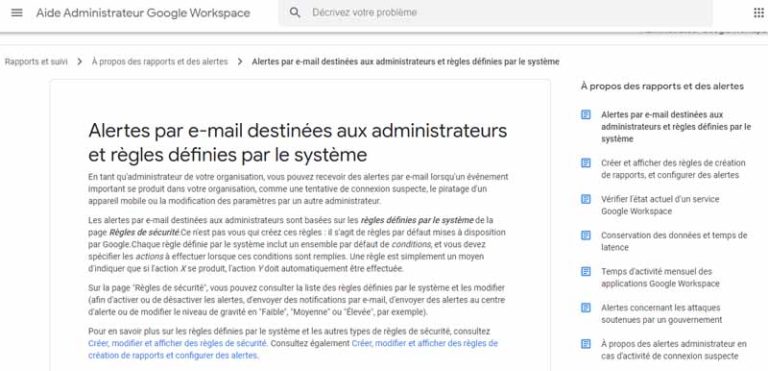
4.2. keep an eye on your backlink profile
This step is probably the most important of all the steps you can take to effectively keep your site free of spammers. And to apply it, you have the choice between backlink tools like
These tools allow you to keep an eye on all the backlinks that point to a site. They are also equipped with a site explorer to evaluate the quality of the referring sites that redirect these backlinks
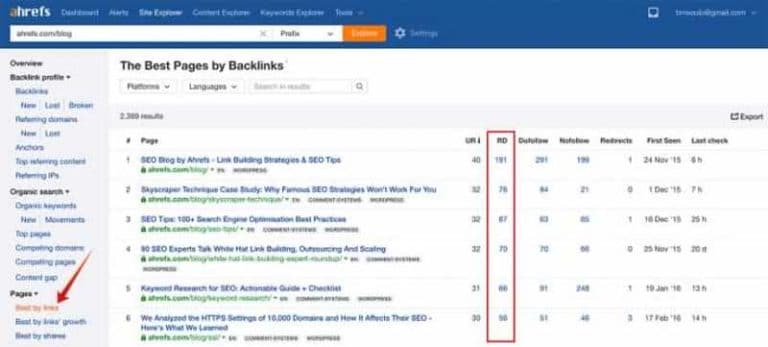
This preventive step is very important as the backlink profile of the site can be constantly monitored for a quick and efficient response in case of an attack
Thus, as soon as a site receives a link from another site, it immediately checks its authority on the web to make sure that it is not a spammy site
Sites can also use these tools to explore the link profile of their competitors to learn more about their backlink acquisition techniques and come up with something better
4.3. Protect your best backlinks
One of the methods spammers can also use is to attempt to remove your best backlinks. Usually, to do this, they will impersonate you and ask the owner of the backlink to remove it
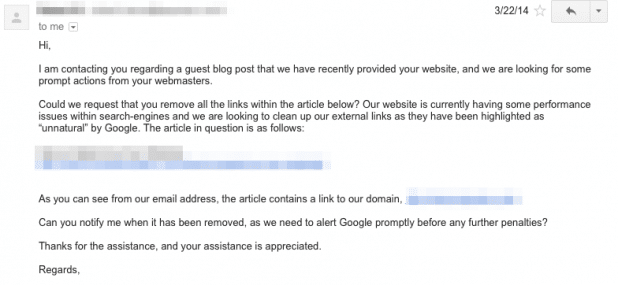
To lend credence to their request, they will use your exact first and last name
To prevent them from impersonating you, you can take these two precautions
- Always make it a habit to use a professional email address when communicating with webmasters. These types of emails are more difficult to reproduce than a simple Gmail or Yahoo account. Example of a professional email contact@twaino.com
- Keep track of your most important backlinks. Tools like Ahrefs can compile a list of your backlinks filtered by the best ones
So, as soon as you notice one of these links being removed, you should contact the domain owner and ask for an explanation
4.4. Protect your site from hackers and malware
The security is the responsibility of every website owner, especially if it is an e-commerce store. It is important to protect your site against hackers, but also your users’ data
To do so, you have several options, some of which are listed below
- Install the plugin Google Authenticator and configure a 2-step verification if you use the WordPress CMS. This way, each time you connect to the site, you have to enter a security code generated by the plugin directly on your phone.
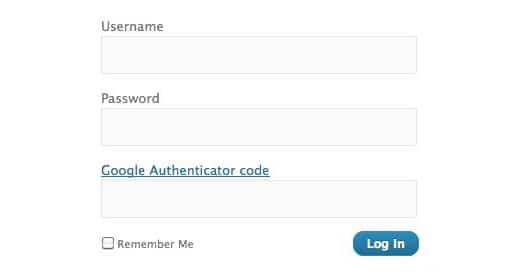
- Get into the habit of using complicated passwords composed of numbers and special characters. Especially avoid passwords created with only your birth date or the name of a relative
- Back up your files and database frequently
- If you offer downloadable files to your users on the site, contact your hosting company and ask about the possibility of installing antivirus software to block any malicious software
4.5. Check your duplicate content
To check if any of your content has been plagiarized from another site, you can use several tools like Copyscape.com or Quetext.com
The use of these tools is quite simple, just enter the domain name of your site or an excerpt of the content you want to check and launch the search
The next page will be a list of websites where your content has been found partially or completely identical
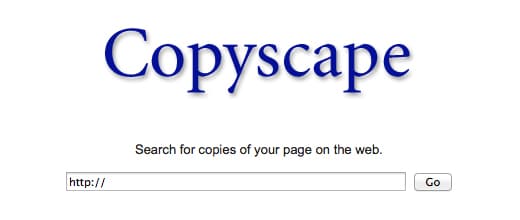
4.6. Monitor mentions of your brand on social networks
Spammers can create fake accounts on networks using your brand or company name identically. It is important to identify these fake accounts and delete them before they develop a significant following
You can use online tools such as Mention.net to track down those who use your exact company or brand name
As soon as your company name is mentioned on a social network or any other site on the net, the tool sends you a notification
So, if it is a case of usurpation, you can take the appropriate measures
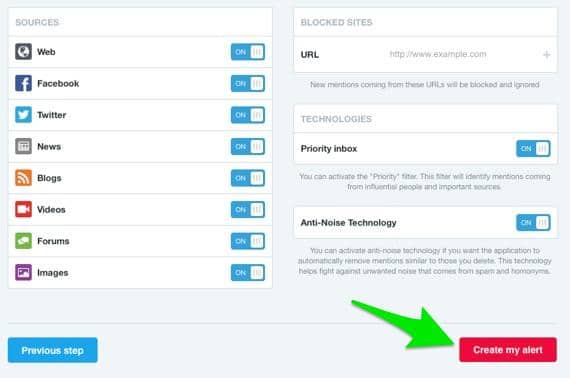
4.7. Check the loading speed of your site
Your site can become slow when someone sends thousands of requests to your server every second. If the problem is not fixed as soon as possible, the situation may get out of hand and the server will go down
To prevent this from happening, you can use the Pingdom.com to monitor the site load time and server status

A registration is required to use the tool. After that, you can activate the email alert and be notified immediately when the site goes down. If it is a negative SEO attack, contact your web host as soon as possible
4.8. Don’t be a victim of your own SEO methods
It is important to make sure that your own SEO strategies do not become a liability for the site by transgressing Google’s recommendations
Here are some of those recommendations to observe
- Create backlinks to authority sites
- Do not invest in buying backlinks on social networks or any other dedicated platform
- Produce quality content when requestingguest articles
- Conduct your backlinks campaigns well
4.9. Avoid making enemies on the Net
It is important not to make enemies on the web. Avoid getting into arguments with a consumer, since you don’t know what they really are and how far they are willing to go
Generally, spammers who attack a website do so for 3 reasons
- For fun
- For revenge
- To outrank a competitor on the search engine pages
So be careful how you approach users on the Net
Chapter 5: Other questions asked about Negative SEO
5.1. What is negative SEO?
Negative SEO is a set of actions designed to lower a website’s ranking in search engine results pages (SERPs). Generally, negative SEO is considered to be “black hat” because its intent is usually malicious. This is not always the case, however, as web developers can sometimes harm a site unintentionally.
5.2. Does negative SEO still work?
Today, most websites are completely safe from negative SEO attacks. Google has gotten pretty good at detecting spammy backlink feeds, so these types of attacks are unlikely to affect your rankings, even if they do occur.
5.3. How do I know if my site is under a negative SEO attack?
The following are signs that something is wrong with your site:
- Sudden drop in search traffic;
- Manual penalty notification;
- Drop in individual keyword rankings ;
- Etc.
5.4. How to fight against negative SEO?
To prevent negative SEO attacks, do the following:
- Avoid duplicate content;
- Ensure a good protection of your best backlinks;
- Keep track of your backlink profile;
- Monitor your social media mentions;
- Set up the email alerts offered by Google Webmaster Tools;
- Make sure your website is well protected against malware and hackers;
- Don’t lose track of your website’s speed;
- Don’t get trapped by your own SEO strategies.
5.5. What is the Google Disavow tool?
The Disavow is a tool built into Google Search Console that allows websites to reduce the value of an inbound link, thus helping to avoid link-based penalties.
5.6. Where to find the disavow tool?
Make sure you have your list of bad backlinks ready. Then head to the Disavow tool at Google Search Console. Select the site you want to use and click on “Disavow links”.
5.7. How do I submit a disavow file in Google Search Console?
Step 1: Upload your backlink profile. The first step in determining whether you should submit a disavow file to Google is to upload your backlink profile to see who is linking to you
Step 2: Perform a backlink audit.
Step 3: Create a disavow file.
Step 4: Submit your disavow file.
5.8. What is a bad backlink?
Bad backlinks are links that come from spammy sites most often. These toxic backlinks can occur organically, or they can be the result of black hat or negative SEO efforts.
5.9. How do I remove bad backlinks from my website?
The process of removing bad backlinks is relatively simple, although it can be time consuming:
- First of all, understand what makes a backlink ” bad ” ;
- Use a tool to identify all the bad links pointing to your website;
- Compile a list of all toxic domains (.txt format) ;
- Disavow them from Google using the Google Disavow Tool (or just report these backlinks to Google, and it will ignore them).
5.10. What can negatively affect the SEO of a website?
- Creating low quality links to your site in large quantities;
- Presence of bad redirects on your site;
- Presence of duplicate content on your site
- Bad use of the Noindex tag, Robots ;
- Etc.
Conclusion
Negative SEO is a set of malicious strategies used intentionally to ruin the SEO of a site. Even if Google seems to reassure webmasters, the threat of Negative SEO is very real and is still present
The search engine still offers a disavow procedure to report unwanted links and ignore them to avoid ruining the SEO of the site
Even if the disavowal procedure and many other measures exist to recover from a NSEO attack, there is no infallible method to protect yourself
That’s why the best way to prevent these attacks is to constantly monitor your site to detect any threats before they become harmful
If you enjoyed this guide or have any concerns about it, feel free to leave me comments at the bottom of this guide.
See you soon!

